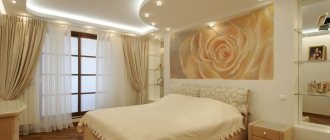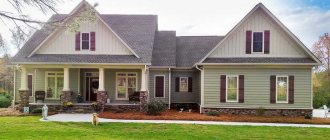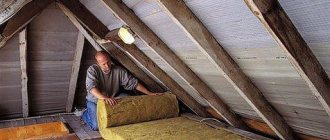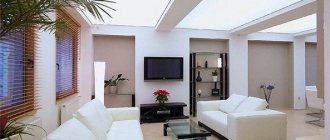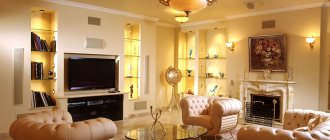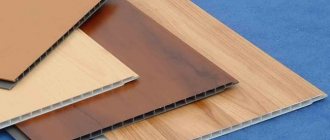Every owner of a country house strives to make his property attractive, cozy and comfortable, and absolutely safe. The organization of lighting plays an important role in this matter: not only in the building, but also outside it. A necessary step is the arrangement of lighting for the area, porch and path leading to the building, but many owners do not limit themselves to this: they decide to decorate the facade with light. Such illumination decoration looks original and unusual: street lighting of a private house allows you to completely transform its appearance at dusk, making the building stand out against the background of other, unremarkable, dark buildings.
Street lighting
An important part of it is the street lighting of a private house - the design of the facade. It can be performed for all walls, or only individual parts can be highlighted. Such lighting is used to create comfortable conditions for moving around the site in the dark. Decorative lighting also includes the lighting design of individual elements of the site: gazebos, paths, flower beds, artificial ponds, small sculptures.
When planning the organization of decorative lighting, be sure to take into account:
- landscape design, appearance of the building, style of lighting fixtures;
- exact location of all objects, convenience (possibility) of laying wires;
- the optimal number of lighting fixtures, features of their connection;
- the need for complete safety of absolutely all street lamps.
The last condition is extremely important for lamps that will be located near or inside bodies of water.
Its purpose
According to their purpose, street lighting is divided into two large groups. Lighting can be functional (utilitarian, that is, useful) and decorative.
- Functional. Its main task is to ensure the safety of movement around the site, near the house and other buildings. It, in turn, is divided into accompanying, marking and technological. The first type includes equipment equipped with sensors that react if a moving object appears nearby. Marking lighting is necessary for “particularly dangerous” areas: these are gates (to the yard, to the garage), steps and other obstacles that in the dark can provoke a fall. Technological light is used to mark outbuildings.
- Decorative. It is intended only to improve the appearance of the house and site. In this case, the only important criterion for him is the “appearance” of the building and the surrounding area - their attractiveness, effectiveness, aesthetics.
Both types of lighting must meet the most important requirement: they should not cause the slightest inconvenience to neighbors.
Lighting type
The general appearance of the site and the appearance of the house depend on the brightness and glow temperature of the selected lamps. Therefore, these characteristics are always paid attention to.
- Cold light is characterized by restraint. It will make it possible to emphasize individual elements of the facade or site.
- The warm yellowish glow, which is very similar to the natural evening glow, will create a feeling of comfort and will be conducive to relaxation.
- Neutral white light does not change perception, so its impact on the occupants of the house will be minimal.
Multi-colored lamps are often purchased to create a festive atmosphere. Their constant use is impractical, since they are not able to provide a sufficient level of illumination.
Lighting fixtures for the area
The range of such devices is quite wide. Now you can purchase products of any shape, size and power. For decorative lighting of the building and surrounding area, purchase:
- Spotlights. They provide a bright luminous flux, so these devices are recommended to be purchased for large estates. Floodlights can be installed anywhere.
- Spot lighting devices. They help highlight certain areas around the perimeter. They are used to illuminate the boundaries of pools, flower beds, and paths.
- Wall lights. These devices are used to decorate the facades of houses, gazebos, and outbuildings.
- Ribbons, garlands. This discreet decor is ideal for both buildings and path lighting.
- Lamps for ponds. Their difference is maximum protection from moisture.
All models have one more classification. They are divided into conventional devices that require power supply, and stand-alone devices. The latter operate using solar panels. The choice is made depending on the requirements: the first guarantee bright light, but the second are easy to install, and they promise significant savings.
Video description
About the visualization of the lighting of the area in the following video:
This might be interesting!
In the article at the following link, read about the intricacies of landscape design.
- Decorative lamps
. In addition to the usual traditional models, there are many bright solutions with non-standard designs. Popular options are in the Art Nouveau or high-tech style, as well as in the form of sculptures, giving the setting a sophisticated look.
Lamps operating outdoors year-round must have certain performance characteristics and not be afraid of high humidity and temperature changes. Several types of lamps are suitable for working in such rather harsh conditions, including:
- Incandescent lamps
. One of the most common lighting methods. The products have a low cost and a service life of several thousand hours; The disadvantage is considered to be low efficiency and heating, which places demands on the heat resistance of the lamp material.
- LED sources and strips
. They produce bright light, last a long time, and consume little electricity. Some varieties are equipped with brightness adjustment.
Vintage Pole Lights Source seattlehelpers.org
- Halogen and fluorescent
. Compared to an incandescent lamp, they last much longer, have high luminous efficiency, and consume much less electricity, which ensures savings during operation. Fluorescent lamps have a limit on the number of on/off switches, so they are not recommended for use in circuits with motion sensors.
- Fiber optic systems
. In fact, this is a cable that can be pulled into a place that is inaccessible to other lighting fixtures.
- Sodium lamps
. They are characterized by a pleasant warm spectrum and a long service life (about 30 thousand hours).
- Solar lamps
. Non-volatile devices accumulate solar energy during the day (they are also charged in cloudy weather), and at dusk they emit soft diffused light. They work for 8-10 hours, are convenient for simple installation and low maintenance; If necessary, the placement of spot lighting can be easily changed.
Solar Landscape Lights Source seattlehelpers.org
This might be interesting!
In the article at the following link, read about lighting options for your backyard area.
Types of decorative lighting at home
Today there are four main varieties. Home owners will have to choose one of the following lighting options:
- accent;
- dynamic;
- flooding;
- and contour.
All types have their advantages, and the decision to use one or another option is made by the designer, who, when choosing, always takes into account the style, architectural features of the building, as well as the preferences of the owners of the house.
Accent design
It is also called local. This is the most popular, universal type of lighting decor. The secret of its popularity is its ability to be used for buildings of any style. The emphasis is on the most original elements of the facade: balconies, cornices, columns or door and window (less often) openings are often illuminated. Such local street lighting is performed using bright lamps. They are fixed directly on the facade of the building.
Dynamic
This design can combine several types of decor, since its main differences are changes in the intensity of the light flux and the color of the lighting. To achieve this result, sensors and special controllers are used. Lighting changes with changes in time, weather, etc.
Automation can be responsible for control, but manual mode is also possible. The main elements of the system are LED lamps, strips, and spotlights. To control the devices, special equipment is used. Due to its complexity, this type of lighting is used less frequently for private homes.
Flooding
Its main task is to guarantee the integrity of the perception of the house. This type of design is used for monuments, as well as buildings that stand alone and are not tied to other architectural objects. In this case, the effect is achieved using fairly powerful LED spotlights.
Lighting fixtures are placed at some distance from the walls of the house: either directly on the ground or on special supports. For this type of design, correct calculation of the distance and angle of incidence of light rays is extremely important. Inaccuracy will result in light that is uneven or unclear.
Contour
This is another original type of decorative design of the facade - highlighting the outlines of the house. In this case, the lighting devices are LED cords or strips, as well as spotlights.
Innovative contour lighting appeared not so long ago, but has managed to find quite a large “army” of fans. This option allows you to highlight the entire facade or only its individual elements: the roof, balcony, window, doorways, stair railings, fences or terrace.
How to choose the type of street lighting?
To obtain an ideal result, several criteria must be considered:
- the area where the building is located, its significance in architecture;
- style of building, its composition, architectural features;
- materials used for facade finishing.
Before making a final decision, the house is examined from all angles. Choose the one in which the building will look most impressive and advantageous.
Country house lighting functions
You should pay attention to the functionality of the lighting elements and select the type of lighting in accordance with its purpose. The following types of lighting are required for a country house:
- technical, including lighting of doors, house paths, gates and gates;
- decorative, including illumination of individual façade parts, as well as trees, shrubs and other elements of the local area;
- accompanying light, represented by individual lamps that can turn on and off in response to human movement.
Of course, currently in first place in popularity among devices for lighting a country house are a spotlight and an LED lamp. The floodlight is used more often because it has a high level of power and is quite affordable for most homeowners.
You may also be interested in an article in which we talk about the rules for choosing materials and ready-made solutions for framing windows on building facades.
You should pay attention to the functionality of the lighting elements and select the type of lighting in accordance with its purpose.
Street lighting of a private house: pros and limitations
Such architectural decoration of buildings has long ceased to be a curiosity in large cities. For organizations or establishments, this is a mandatory attribute that does not allow them to fade in comparison with other competitors and to attract the attention of potential clients with their respectability. However, the illumination of houses “stepped” further from megacities: this fashion turned out to be “infectious”, so it soon attracted owners of suburban areas. Now this solution has become very popular.
Advantages
Street lighting allows you to:
- emphasize as much as possible all the architectural features of the house, make it bright, memorable, solemn;
- ensure safe movement, as the lighting of the surrounding area will be enhanced;
- hide the existing shortcomings of the structure, visually change its configuration.
In addition, well-made lighting will highlight the tastes of the home owners, and this, in turn, will have a positive impact on their image and status.
Peculiarities
An unusual lighting design at night gives a good chance to turn even a relatively simple country house into a unique and inimitable building. However, there are some limitations for façade lighting of small individual buildings.
Flood street lighting of a private house is not recommended. It is still intended for impressive, tall buildings in megacities, and not for suburban villages. Dynamic design is also not the best option, even from a practical point of view. The costs associated with such registration are also unlikely to make anyone happy. For these reasons, designers advise owners of country houses to opt for accent or contour lighting decor.
Nuances of lighting design
When designing lighting, it is always necessary to take into account the landscape lighting of the local area, since the decor of the building must be in harmony with the lighting of paths, gates, recreation areas - gazebos, swimming pools, flower beds. In this case, you first need to think about the overall style, which will make it possible to achieve the ideal combination of all elements of lighting design.
The choice of lamps is the next topic for thought, since their appearance depends on the material used to decorate the facade, as well as on its color. If shiny metal panels were chosen for wall cladding, then the best option would be vertical lighting fixtures, albeit small, but bright. It is better to buy lamps whose light beam has opposite directions, allowing you to illuminate the walls from above and below. When the home's decoration is dark and rough, it is not recommended to use such lighting.
Area lighting options
Decorative lighting of the local area can be done in different ways. For example, preference is often given to highlighting individual “important strategic” objects. Most often they include a garage, a gazebo, a summer kitchen, and a pantry.
Another option is to use lighting to complement your landscaping. With its help, the emphasis is placed on flower beds, alpine slides, artificial reservoirs, which need to be allocated a safe area for “loitering” vacationers.
To create the perfect outdoor light, there are a few things to consider.
- The area of the local area. If it is small, then it is not recommended to decorate it with the maximum number of lamps, since excess light will negatively affect the perception of the area. A large expanse has no such restrictions.
- Ergonomics. Technical lighting parameters must be ideal. Bright light throughout the entire area will not add comfort, so it is better to prefer zoning. This approach will highlight the main advantages and, on the contrary, hide minor mistakes.
- Practicality: ease of operation and maintenance of the system. Free access to each element and a well-thought-out control scheme will ensure convenience for owners and reliable operation of lighting devices.
- Protection from moisture and dust. External lamps must have a certain protection class. For decorative lighting of a house or area, IP43/IP44 class models are required, and IP66/IP67 class devices for swimming pools.
- View from the window of a residential building. The lighting should not only look perfect and harmonious, it should allow owners to clearly see all the highlighted objects without going outside.
The last topic for thought is the choice of operating mode for lamps. In this case, there are two options: constant operation or equipping the devices with motion sensors. The second method promises serious savings, especially if powerful equipment is used.
Selecting Acceptable Equipment
The choice of the main configuration of illumination devices should be based on the size of the territory, as well as the specifics of the building. The fundamental selection factors are:
- ownership of the equipment used;
- main type of lighting installation;
- type of fastening;
- mounting system.
Since the basic task of electronic lighting equipment is to emphasize the artistic aesthetics of the home and create a certain level of security for the territory, you should familiarize yourself with the technical features of the devices.
A high-tech device must meet specific safety standards. Their total number includes electrical safety, dust and moisture resistance, protection from mechanical stress, and suitability for specific climatic conditions.
Basic points related to the arrangement of architectural lighting:
- the lighting system operates thanks to the use of lighting installations equipped with IP65 protective equipment;
- It is best to choose lighting devices that have aluminum housings;
- Diode lighting must be powered using a transformer.
Decoration of gazebos or verandas
In those structures that are attached to the house, several ceiling lamps are often installed. However, there is another alternative - outdoor wall fixtures - lanterns or hemispheres. In this case, the wires are laid directly from the house.
When lighting gazebos, other options are used:
- garlands located around the perimeter of the roof, under the ceiling, wound on support poles holding the canopy;
- LED strips: they are not hung like garlands, but fixed on the roof or pillars of the building.
A more labor-intensive method is hanging lanterns. They will definitely require reliable cable fastening (for example, to additional racks).
Illumination of other elements
Beautiful design of the site implies the decoration of all objects and structures of the territory. These include paths, steps, flower beds, trees and shrubs, artificial ponds.
Paths, steps
Wireless lighting devices are traditionally used to illuminate paths. The best option would be LED lamps with supports 300-500 mm high. They are equipped with solar panels, which actively accumulate energy during the day and release it at night.
Another popular option that can also be used for steps is LED strips. They are fixed on the curbs on the side of the paths. Recessed floor lamps with wear-resistant glass are chosen for tile and stone surfaces.
Plants and flower beds
To illuminate bushes and trees, it is recommended to use fairly powerful spotlights. They must be installed under the plants and aimed precisely at the object. This design requires careful design, taking into account landscape design.
The main difficulty in this case is the need for hidden wiring. Another type of suitable tree lights is LED string lights. Illumination of flower beds is often done using LED strips located along the perimeter of the flower bed, but it is possible to use small spotlights.
Swimming pools, ponds
For artificial reservoirs, it is better to prefer equipment that is maximally protected from moisture. Such devices are distinguished by a sealed housing, which prevents water from entering the device’s circuits and batteries. Lighting is installed around the perimeter of reservoirs, or on the site near them.
Internal lamps are mounted on the bottom or walls of pools. Floating devices act as additional light sources. Installation of stationary indoor lamps requires wires that are protected from water.
No. 6. Main types of lamps for the site
It is desirable that the illumination of the area is not only a stylish and functional addition, but also does not lead to exorbitant costs for the use of electricity. Traditional incandescent lamps are far from the most economical option ; they get very hot during operation, which consumes most of the energy, quickly burn out, and can even explode at low temperatures. There are a lot of alternatives to incandescent lamps today:
- fluorescent and halogen lamps , which are more economical and durable;
- LED lamps and strips do not heat up, consume minimal energy, shine brightly enough, and in terms of durability they confidently outperform competitors. Moreover, when using this type of lamps, it will be possible to easily change the brightness of the lighting. Typically, LEDs are used to create decorative lighting, arranging hidden lighting for ponds, steps, benches, the facade of a house, or hiding them in the crown of trees or shrubs;
- fiber optic systems – a new word in the field of garden lighting. They can be used as sources of main or additional light, for architectural lighting and even for decorating pools and ponds. Such a system consists of a projector (light source for the optical fiber), an optical cable or fiber, a common input, threaded attachments and various terminal devices. It turns out that with just one generator it is possible to provide lighting to a large area. The main advantages of the system are ease of operation, durability, cost-effectiveness and the absence of requirements for waterproofing of lamps.
We should also highlight such interesting modern solutions for garden lighting as paving slabs with LEDs built into them and fluorescent tiles with the ability to accumulate solar energy during the daytime.
Lighting requirements
Any street lighting for a private home should be as safe as possible, so before planning such an operation, you need to become familiar with the mandatory conditions.
- The reliability of the entire system will be ensured by lighting fixtures and cables that are designed for outdoor use. It is also necessary to take into account other features of a particular area: the lowest and highest temperatures in the region, the frequency of precipitation, as well as its amount.
- Installation work - laying cables. In this case, there are two options - air or underground. The first method is easier, but the service life depends largely on external conditions. The underground route is a guarantee of maximum reliability, but the quality of work must be perfect.
- Maximum load. If the owners plan to use not only wireless devices, then for each group (for the facade, paths, other buildings) it is better to provide separate machines in advance.
Street lighting of a private house will make the home and the surrounding area as safe and attractive as possible, even in the dark. However, this work is not easy, so it is better to entrust planning and implementation to competent specialists who can vouch for the quality of the work. The simplest, most undemanding devices—autonomous lamps with solar batteries—can be installed independently.
This popular video will show you one of the ways to get what you want:
Types of lamps used
Types of lighting devices for dachas are divided into several categories. The most relevant is the division by shape and external design, by type of lamps and by the method of installing the lamp. The division by design is the most difficult, since there are countless types, and it is not possible to sort them out, so we will leave the choice of external characteristics to your discretion.
Based on the type of lamp, lighting in the country is divided into the following categories:
- incandescent lamps - they are characterized by low cost, but quickly fail and produce the lowest light output - about 5 - 10 W/Lm;
- gas-discharge - also have a low cost, slightly superior to models with filament in light output of 12 - 15 Lm/W, slightly longer service life;
- luminescent - characterized by a light output of 25 - 50 Lm/W, but their main drawback is that they begin to act up at temperatures below zero;
- LED light bulbs are the most profitable option, despite the high cost of LED-type devices, they produce about 90 - 120 Lm/W and have the longest service life.
According to technical features, the following lighting devices are distinguished:
- floor - installed on the floor or ground, have different heights;
Floor lamps
- wall-mounted – placed on the walls of buildings or other structures;
Wall lights
- hanging lamps - all kinds of garlands, chandeliers, etc.;
Pendant lamps
- with directional flow - lighting devices with a reflector that can illuminate not only the territory, but also specific objects;
With directional flow
- built-in – installed flush with structural elements of the landscape (sidewalk, steps, etc.)
Recessed luminaires
- fiber optics - create interesting effects, especially popular for placement in water.
Fiber optic backlight
